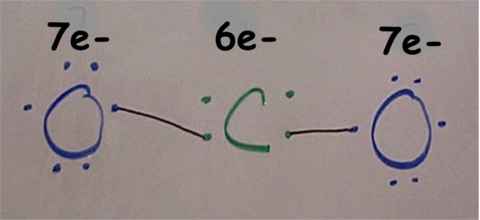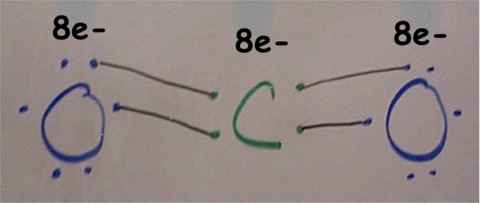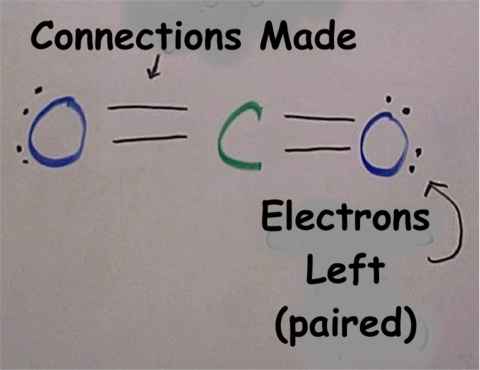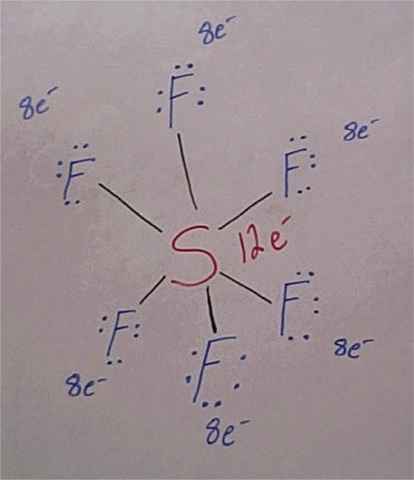|
#32 - Covalent bonding 101
You�ve learned from a long time ago that non-metals can bond with each other. This process is very complicated for the reason that many variations can happen. With ionic bonding, a metal and a non-metal can always bond in one way(with the exception of transition metals). For example, if calcium(Ca) and oxygen(O) bonded, the formula will always be CaO. Never in nature will there be a Ca2O or a CaO2.
With covalent(non-metal - non-metal) bonds there can be tons of variations. For example, if carbon(C) and oxygen(O) bonded, there can be a CO, a CO2, and a CO32-.
That�s why:
- Covalent bonds are named differently
- You will never be asked to form a covalent bond by just having the elements
(i.e. form a bond between sulfur and fluorine)
- There�s a method to interpreting covalent bonds with Lewis structures!
Lewis structures are basically a picture and here�s how to make one.
First here�s a sample covalent molecule:
CO2
-
Find the central atom (the atom that everything bonds to) by determining the element with the lowest electro negativity:
electro negativity - how much an atom wants to keep an electron. F has the most. As the group number gets lower, the less electro negativity. It also gets lower as the period number increases.
Hydrogen is never the central atom because it can only bond to one thing and if there only two atoms involved, then neither is "central".
in CO2, the central atom is carbon
Draw the other atoms around the central atom in a symmetrical pattern

Fill the umber of electrons in the outer shell for every atom (this is equal to the group number)

If there is a negative charge on your molecule (like in CO32- ) put the number of electrons in a box on the side of your lewis structure (2 electrons for CO32-, because electrons are negative). If there is a positive charge on your molecule, (like in NH4+) put "X�s" in the box for the charge ( 1 "X" for NH4+)
Now back to using CO2 as an example. Draw lines from one of the electrons of the central atom to the electrons on the other atoms.
(e- is a symbol meaning electrons)

-Do it logically so the atoms have 8 electrons. All atoms have to be connected to the central atom with at least one connection.

If you have an extra electron or an "X" add them to where they would solve your electron problems.
Clean it up, it should look like this:

You have made your very first covalent bond!
Here�s some more stuff you should know:
If the central atom is:

|
C - Carbon |
 |
N - Nitrogen |
|
O - Oxygen |
|
F - Fluroide |
It has to have 8 electrons in it�s outer shell, NO MORE. They can�t accept any more electrons for the reason that they don�t have any more room for them. They don�t have any "p" or "f" orbitals to hold them in. They are called non-violators.
Just think of this pneumatic device:
- "8 is CNOF(sounds like enough) electrons."
- CNOF meaning the first letters of the four non-violators.
- These non-violators are also in the second period of the periodic table.
Other atoms like:

|
P - phosphorus |
 |
S - Sulfur |
|
Cl - Chlorine |
|
I - iodine |
They can have more than 8 electrons in their outer shell;
other�s like boron(B) hold less than 8. They�re called violators.

S is a violator having 12 electrons because s has 3d orbtals to stuff the electrons in.
This process seems very complicated, but as you do them, they get easier, so hang in there!
| 









